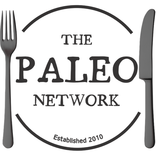Thiamin & The Paleo Diet
If you want to ensure you keep your body healthy, it is important to consume the right foods with plenty of the essential vitamins required for a healthy lifestyle. One of these vitamins is Thiamin, which is the water soluble vitamin B. The function of Thiamine in the body is to help our cells produce energy and it is imperative in order for our hearts, muscles and nervous system to function properly. Thiamin improves the contraction of muscles and also increased fertility in adults. It is also essential for children as it helps to improve the immune system from a very early age.
There are many notable signs that you may not be consuming enough Thiamin in your body. If your immune system is weak and you suffer from a lot of colds and flus, it may be due to a deficiency in Thiamin. As Thiamin is found in such a high number of different foods, it is quite rare to be deficient in this vitamin but it is quite common in alcoholics. It can also lead to a loss of weight and problems with the cardiovascular and nervous system. If you are consuming too much Thiamin, it can also have negative effects on the body, although these may not be as noticeable as consuming too little. It is recommended that females have around 0.8mg of Thiamin, while males have 1mg. The recommended intake should be lower for children, so it is worth checking before you consume foods with Thiamin.
There are many foods on the Paleo diet which can help you to improve your intake of Thiamin. If you can manage to eat it, offal is a really good source of Thiamin and you can easily incorporate this into your daily meals if you don’t want to eat it as it comes. It is also found in high quantities in meat, such as beef and pork, which is why the Paleo diet is one of the healthiest to follow as it encourages the consumption of these food groups. It is always a good idea to ensure you are not consuming too much of this as otherwise, you won’t feel the full benefits.

If you enjoy eating your snacks on the Paleo diet, you will find that nuts and seeds act as a good source of Thiamin so consume these in moderation and you will soon notice the results. It is also found in a variety of fruits and vegetables, including asparagus, cauliflower and oranges. Eggs are also a good source of Thiamin and are a good choice to eat for your breakfast, as it will set you up for the rest of the day.
Thiamin is a source of vitamin B which is very sensitive to heat which means it can be easily destroyed during the cooking and preparation of food. A good method to use to get the most from it is to ensure you always cook your Thiamin rich foods for as little time as possible, as you will get the full benefits from it. There are other foods which you may want to add to your meals to absorb the Thiamin, including garlic and onions. These will also make them taste a lot better in the process.
As part of any healthy diet it is vital to consume a full range of the right nutrients and vitamins, which is why the Paleo diet is the healthiest to follow. If you are feeling lethargic and in need of a boost to your immune system, Thiamin will help you to feel much healthier and will improve your appearance. You can also find Thiamin in supplements, but it is much better to try and get this from the foods you intake.
As long as you follow the Paleo diet strictly, you will be at your healthiest as you are consuming a wide range of different foods which offer a number of different benefits to the body. No matter what stage of life you start the Paleo diet, whether young or old, you will notice the difference in how you look and feel quite quickly. It is a great diet to ensure you are getting the right amount of vitamins and minerals from your foods. It is important to just keep an eye on your intake of each of the nutrients, so you are getting the maximum possible benefits from your food.




